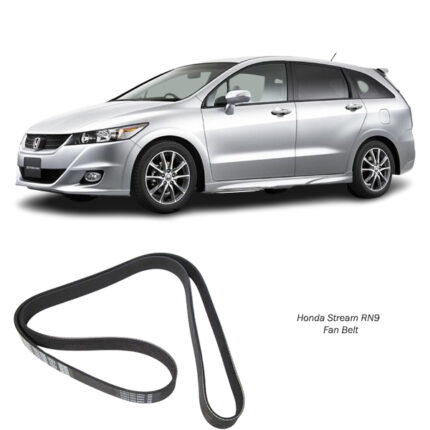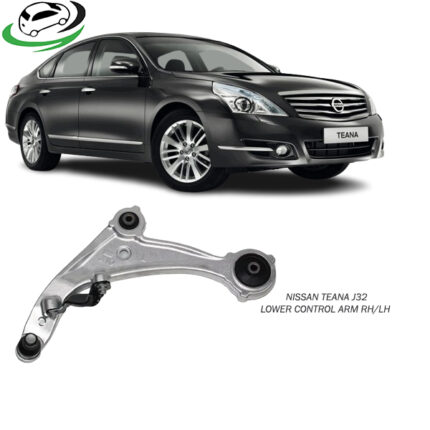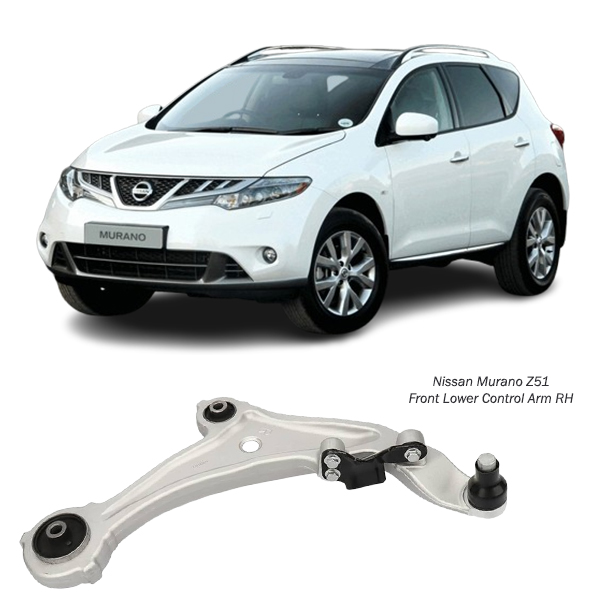-20%
Get Nissan Murano Z51 Front Lower Control Arm RH 54500-1AA1A in Kenya
The front lower control arm, specifically the Right-Hand (RH) variant, plays a critical role in a vehicle’s suspension system. It ensures the stability, safety, and smooth handling of the vehicle. Understanding its functions, benefits, and maintenance is essential for car owners, mechanics, and automotive enthusiasts.
What is the Front Lower Control Arm (RH)?
The front lower control arm is a key suspension component that connects the vehicle’s chassis to the wheel hub assembly. Positioned on the right-hand side of the vehicle, the RH designation indicates that it is specifically for the passenger side in most left-hand-drive vehicles. Control arms are typically made from steel, aluminum, or stamped metal, and they feature bushings and ball joints that facilitate motion and absorb impacts.
Functions of the Front Lower Control Arm (RH)
- Wheel Alignment and Stability:
The control arm keeps the wheel in proper alignment, ensuring consistent contact with the road surface for optimal traction and control. - Suspension Geometry Maintenance:
It plays a crucial role in maintaining the suspension’s geometry, ensuring smooth movement of the wheel during acceleration, braking, and turning. - Absorbing Road Impacts:
The control arm dampens vibrations and absorbs shocks from uneven road surfaces, contributing to a more comfortable driving experience. - Facilitating Steering Precision:
It works alongside the suspension and steering systems to ensure precise and responsive handling.
Components of the Front Lower Control Arm (RH)
- Control Arm Body:
The sturdy, metal arm forms the backbone of the component. - Bushings:
These rubber or polyurethane inserts reduce vibrations and noise while allowing controlled movement. - Ball Joint:
The ball joint enables rotational movement, allowing the wheel to pivot during steering.
Benefits of a Well-Functioning Front Lower Control Arm (RH)
- Enhanced Handling:
A properly functioning control arm ensures smooth and precise handling, even at high speeds or during sharp turns. - Improved Comfort:
By absorbing road shocks, the control arm contributes to a more comfortable ride for the driver and passengers. - Prolonged Tire Life:
Correct suspension geometry, maintained by the control arm, prevents uneven tire wear. - Safety Assurance:
It ensures that the wheel stays securely attached to the vehicle, which is critical for safe operation. - Reduced Noise and Vibrations:
The bushings help isolate road noise and reduce vibrations for a quieter ride.
Signs of a Faulty Front Lower Control Arm (RH)
- Unusual Noises:
Clunking or knocking sounds when driving over bumps or during turns can indicate worn-out bushings or ball joints. - Uneven Tire Wear:
Misalignment caused by a damaged control arm can lead to uneven tire wear patterns. - Poor Steering Response:
If the vehicle feels less responsive or wanders, it could be due to a failing control arm. - Excessive Vibrations:
Vibrations in the steering wheel may be caused by worn bushings. - Visible Damage:
Cracks, bends, or rust on the control arm are clear indicators of a problem.
Common Causes of Damage
- Wear and Tear:
Over time, bushings and ball joints wear out due to constant use. - Road Conditions:
Potholes, curbs, and rough terrain can damage the control arm. - Corrosion:
Exposure to moisture, salt, and dirt can lead to rust and weaken the metal structure. - Accidents:
Collisions can bend or crack the control arm, compromising its functionality.
Maintenance Tips
- Regular Inspections:
Periodically check the control arm and its components for signs of wear or damage. - Lubrication:
Ensure ball joints are adequately lubricated to reduce friction and wear. - Replace Worn Bushings:
Replace bushings as they deteriorate to maintain optimal performance. - Avoid Harsh Driving Conditions:
Minimize driving on rough roads or hitting curbs to extend the life of the control arm. - Alignment Checks:
Regular wheel alignments help ensure proper suspension geometry and reduce stress on the control arm.
Replacement Process
Replacing a front lower control arm (RH) requires mechanical expertise. Here’s an overview of the process:
- Preparation:
Gather the necessary tools, including a jack, jack stands, wrenches, and a replacement control arm. - Lifting the Vehicle:
Secure the vehicle on jack stands and remove the front right wheel. - Disconnecting Components:
Detach the ball joint, sway bar link, and any other connected components. - Removing the Old Control Arm:
Unbolt the control arm from the chassis and the wheel hub assembly. - Installing the New Control Arm:
Securely bolt the new control arm into place, reconnect all components, and ensure proper alignment. - Testing:
Test the vehicle for proper handling and suspension performance after the replacement.
Benefits of Timely Replacement
- Restored Performance:
A new control arm restores handling and ride quality. - Enhanced Safety:
It ensures the suspension functions as intended, reducing the risk of accidents. - Cost Savings:
Timely replacement prevents further damage to associated components, such as tires and other suspension parts. - Peace of Mind:
A properly functioning control arm provides confidence in the vehicle’s reliability.
OEM vs. Aftermarket Control Arms
When replacing the control arm, consider the pros and cons of OEM (Original Equipment Manufacturer) versus aftermarket options:
- OEM Control Arms:
These are designed specifically for your vehicle model, ensuring a perfect fit and reliable performance. However, they tend to be more expensive. - Aftermarket Control Arms:
These offer a wider variety and can be more affordable, but quality can vary between brands. Choose reputable manufacturers to ensure durability and performance.
Conclusion
The front lower control arm (RH) is an indispensable part of your vehicle’s suspension system. Regular maintenance, timely inspections, and immediate replacement of damaged components are essential to ensure a safe and smooth driving experience. Whether you’re upgrading for better performance or replacing a worn-out part, understanding the control arm’s role will help you make informed decisions and keep your vehicle in optimal condition.
Follow us on Facebook for more parts.



